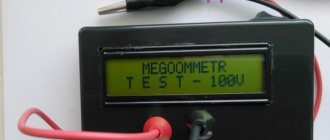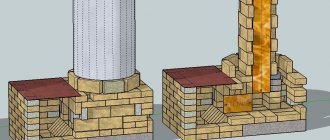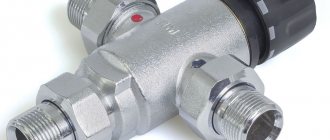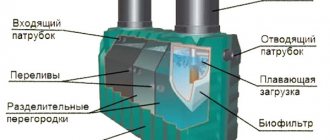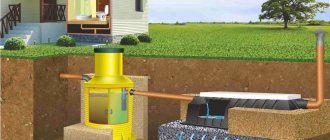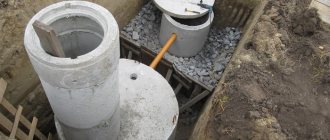If you equip the necessary urban amenities outside the city, you can create comfortable conditions and coziness in a country house, just like in an apartment. One of the important components of modern housing is an equipped sewer system.
New technologies make it possible to create autonomous wastewater treatment systems even in a compact area. In our review you will learn about one of these systems - the autonomous sewage system Topas.
It is popular not only among owners of large households, but also small-sized dachas. When choosing a suitable option, knowledge of its structure will help.
If you install a septic tank like this, you won’t have to worry about calling a sewage disposal machine - a suction pump. Let's look at the operating principle of the Topas septic tank, its popular varieties and the nuances of using such equipment.
Design and principle of operation of the Topas septic tank
A septic tank is a part of the sewerage system, created for the complete processing, clarification and purification of wastewater. Before purchasing a design, it is worth understanding the layout and structure of the Topas septic tank.
Externally, the device looks like a cubic chamber with an oversized lid. Inside it is divided into four sections. A special device is provided for collecting air from outside.
The treatment plant consists of the following elements:
- Chamber for waste collection.
- Airlift, with the help of which wastewater moves between different mechanisms.
- Aerotank is a department where secondary cleaning is carried out.
- Pyramid-shaped chamber for final cleansing.
- Compartment for collecting cleaned water.
- Compressor elements for air supply.
- Sludge removal hose.
- Device for removing purified liquids.
The body of the structure is made of polypropylene. The thickness of the material may vary between models. The external walls are made of sheets with a thickness of more than 18 mm. The partitions inside are thinner. Propylene sheets are attached using welding technology. The products are distinguished by a minimal number of welding seams.
Polypropylene is ideal for making the body. It has low thermal conductivity and retains heat excellently in the cold season. This material is resistant to the aggressive environment that is present in the septic tank. And it is resistant to corrosion.
To control the operation of a septic tank, various electrical equipment is used - air compressors, control units and drainage pumps. All elements are carefully selected and have excellent performance properties.
Such a station is in demand due to its simplicity of design, interchangeability of parts and repairability.
Scheme of work
Before installing the structure, you should find out what the operating principle of the Topas septic tank is. Let's consider the flow pattern of sewer water in the Topas drainage system:
- The waste flows out of the pipe into the first chamber. Large particles fall to the bottom.
- Then the water is poured into an aeration tank, where bacteria dissolve the organic components. During the pumping process, fibrous components are removed using a hair trap.
- The liquid enters a settling tank, where sludge is collected, and the water is separated separately.
After going through the cleaning steps, the liquid is 95% purified, and with the help of a pumping device it passes into the last compartment. This allows you to obtain water that is suitable for technical tasks - watering flowers and lawns. During operation, such a station consumes a small amount of electricity.
The operation of the cleaning equipment involves two phases that are switched using a float switch. The purification phase is started when sewage enters, and the regeneration phase is necessary when there is no waste and to maintain activated sludge.
The supply cable is supplied in the compartment with the compressor. It only needs to be connected to the control unit.
Principle of the chemical purification process
Pollution treatment is a multi-level process that uses a large number of pathogenic microorganisms in activated sludge. Biological cleaning includes the following stages:
- During the aeration process, organic components are removed. Aerobic bacteria produce enzymes that promote the oxidation of organic matter.
- Denitrification and nitrification are the next stage of pollution purification. This does not require the participation of oxygen.
- Phosphorus removal. This component is contained in insoluble elements and in the form of polyphosphates and phosphates that need to be removed.
Modifications
The Topas septic tank looks like a plastic box with a lid. The body of the unit is made of polypropylene, so it does not corrode, rot, or react with the contents or the environment.
Exterior view of the Topas septic tank
These stations are produced with different capacities, designed to process different amounts of wastewater. From 4 to 20 people live in private houses and cottages at a time. For such cases, stations Topas 4, Topas 6, etc., up to Topas 20 are used. For servicing hotels and groups of houses, there are more productive ones designed for 30, 40, 50, 75, 100 and 150 people.
Models have been developed for different groundwater levels: low and high. If the groundwater level is high, you should choose a Topas septic tank with a postscript - Pr. These models are equipped with an additional pump for pumping moisture into the drainage system, storm sewer, a separate container with the possibility of its further use, etc.
Modifications of the Topas septic tank depending on the depth of the sewer pipes from the house
There are modifications for different depths of sewer pipes:
- up to 80 cm, models marked “standard” are suitable;
- at a depth of 80 to 140 cm - Long, have an elongated neck;
- for those buried deeper than 140 cm -240 cm - Long Us.
There are no installations for even deeper burial. When choosing an installation, you first need to decide on the maximum number of people who can live in the house at the same time. In accordance with this, select the performance of the unit. Next, the groundwater level at the installation site of the Topas septic tank is taken into account, as well as the depth at which the supply communications should be located (depending on the depth of soil freezing in the region).
Methods for organizing an autonomous sewer system for a private home are described here.
Types of designs
Topas septic tanks come in different models. To choose an option, you need to calculate the volume of drains leaving the house during the day.
Watch the video - the principle of operation of the Topas septic tank
How does liquid move in a Topas septic tank?
The following models are especially popular:
- Topas 5 is the most popular and budget option. It is suitable for households with at least five people living in them. A septic tank can be used for installation on a surface with a slight slope.
Topas 5 PR is more expensive. It differs from the above-described design by an additional drainage pump, with which you can forcibly pump out purified water for technical purposes. Thanks to this device, it is possible to raise water above the level of the septic tank.- When equipping a house with two floors, suitable for a large family and frequent visits of guests, the best solution would be Topas 8. This model is characterized by high performance and good spaciousness. This design helps handle water discharges of up to 440 liters.
- For large-sized cottages, you can consider an option such as Topas 10. It can process wastewater from three toilets, two showers, washbasins and washing machines at a time.
It is worth paying attention to the markings. “Pr” means that the septic tank is suitable for use in areas with close groundwater flow, and “Us” stands for reinforced, that is, high-power models.
Topas scheme
Let's consider the Topas device, designed for 5 residents.
Topas septic tank diagram
Designations
- A. Reception chamber
- B. Aerotank
- B. Secondary settling tank
- D. Sludge stabilizer
- D. Compressor compartment
- Wastewater input
- Coarse filter
- Main pump
- Sludge pump
- Aero tank pump
- Compressors
- Collection device for non-recyclable fibrous substances (hair trap)
- Output of purified water
- Float sensor
- Junction box for connecting the supply cable
- Station on/off button
- Control block
- Floating substance filter (fine filter)
- Secondary settling tank stabilizer
- Circulation pump
- Aerators
Advantages and disadvantages of the system
When purchasing a Topas septic tank, not only the principle of its operation is important, but also the pros and cons that need to be studied.
This station has the following advantages:
- Easy installation. Installation can be completed in a day.
- High-quality cleaning capabilities. The resulting water is not hazardous to the environment.
- The structure can be placed on any type of soil.
- The tank does not take up much space and does not require a very deep excavation.
- Excellent performance. Can last more than 50 years.
- Sewage does not emit odors.
- If there is a power supply, the design's autonomy is ensured.
- In principle, the device can operate even at subzero temperatures, but subject to certain conditions.
The multi-stage cleaning system allows you to eliminate up to 98% of organic contaminants.
The septic tank is located at a depth and only the lid is visible, so such a structure will fit perfectly into the surrounding landscape. But there are also some negative aspects. If installed incorrectly, various breakdowns can occur, which will require calling an experienced technician to fix.
It is also worth noting the device’s dependence on electricity and electrical failures. It must be taken into account that long breaks in operation are not suitable for the station. If there is a lack of mud flows, the bacteria will begin to die.
Technical parameters of the Topas sewer complex
It is worth noting that in recent years Topas has gained high popularity among consumers. The reason for this is that it has a large number of significant characteristics:
- small dimensions - when placing the complex it is necessary to allocate no more than one square meter for it;
- During the installation of a septic tank, the owner has the opportunity to choose a location for it at his own discretion. The main thing is that sewerage can be installed there;
- no difficulties in removing water that is suitable for use as irrigation or other needs;
- ease of operation and maintenance of the system. If the need arises to perform such work, the owner can cope with this task independently.
As the system is used, sludge will accumulate in the reservoir, which can serve as organic fertilizer.
Advantages
A distinctive feature of the Topas septic tank is the presence of a set of certain advantages, due to which it compares favorably with its competitors.
- the lid is located above ground level, due to which the owner does not have problems with access to the internal structure of the septic tank;
- the design provides a reliable housing that effectively copes with the task of retaining heat;
- the system provides the ability to drain purified water naturally, which eliminates the need to use a pump;
- Due to the presence of water in the septic tank, the system remains in place, which eliminates sudden displacements and its rise above the surface.
Flaws
At the same time, the Topas sewer installation is not without certain disadvantages , which should be taken into account by every buyer who decides to install it in his country house. Among them, the most significant disadvantages are the following:
- The system can only operate if there is current in the electrical network. In the event of a power outage, the installation will shut down. The vast majority of autonomous sewage systems have a similar disadvantage;
- high cost, the reason for which is the high cost of aseptic production.
Cleaning quality
The design and principle of operation of the Topas septic tank are focused only on the purification of household wastewater. Let us take a closer look at what processes occur in each of the chambers of the structure.
Watch the video - principles of maintenance of a Topas septic tank
TOPAS do-it-yourself maintenance
First compartment
First, the flows penetrate this chamber, where mud accumulations are separated into particles of various sizes. In this compartment, wastewater accumulates and bacteria are activated here, which decompose organic matter into water and sludge. When the level of contaminated liquid reaches the location of the float switch, a signal is sent to start the compressor mechanism. Components that are lighter than water appear on the surface.
Second compartment
After this, the liquid flows into the next reservoir. In this container, contaminants settle, and sediment forms at the bottom. Between these two chambers there is a filter that retains large suspensions and fibers.
In this container, microorganisms begin to actively work, breaking down dirt into miniature particles. The compressor supplies oxygen to this part, which affects the active mixing of contaminants with activated sludge. In this container, the water is purified by 50%.
Third compartment
The mixed liquid penetrates into this container. The pyramidal device separates water from sludge. Unnecessary sediment falls to the bottom, and bacteria go to the initial block.
Fourth compartment
This department is called the reception department. This is where clarified water comes in, which has been removed from organic matter in previous tanks. When the liquid reaches the outlet, it enters the environment. If the water remains inside, it undergoes even greater purification.
Electrical circuit Topas
The supply cable is supplied in the compressor compartment. You only need to connect it to the control unit. The Topas connection diagram differs slightly from model to model. The following circuit diagrams are used in septic tanks from Topas-4 to Topas-30.
You can also look at the electrical diagram of the Topas analogue. It is more understandable for the average user.
How to connect a septic tank to the electrical network
As you can see, the Topas connection diagram is very simple and any electrician can figure it out. Or you can buy a Topas control unit assembled: with sealed sockets, with sealed leads that will prevent moisture from getting inside the case.
Why is activated sludge needed?
Activated sludge is a mixture containing microorganisms that carry out purification. Under the influence of bacteria, further decomposition of feces occurs. For them to function, there must be oxygen in the environment. In this station, the elimination of organic matter is carried out by aerobic bacteria, provided with oxygen using equipment.
Biological cleaning with sludge in combination with fine-bubble aeration allows you to get a good effect. As a result of the work of bacteria, the water after purification becomes clean and transparent. Bacteria that destroy organic components are completely harmless and multiply quickly.
Story
TOPAS was designed, received a patent for the invention, and set up production in the Czech Republic by engineer Jan Topol. That's exactly what it is called in English, all over the world. It is called that for a reason. TOP - from the surname Topol, A - activation, C - system. However, in Russia the situation is different - the rights to the Topas trademark belong to the Topol-Eco group of companies.
In the 2000s, Jan Topol entered the Russian market with his products, founding the Topol-Eco company together with several founders, which began production of Topas septic tanks in Russia. A few years later, the campaign was overtaken by a crisis. Jan Topol, together with several founders, left Topol-Eko. Almost everyone who came out founded their own production of treatment facilities of a similar design, but with different names. And Topol went to the Czech Republic to drink beer and work in the European market. True, some of the newly formed companies still continue to cooperate with him.
Rules for operation and maintenance of the station, sludge removal
In order for the septic tank to serve for many years, it is necessary to follow the instructions for its use and provide proper maintenance of the device.
Watch the video - choosing a septic tank, pros and cons
We choose a septic tank. Tver or TOPAS. What's better?
It is worth paying attention to the following recommendations:
- Alkalies or acids should not be allowed to enter the system. These substances destroy aerobic microorganisms.
- No rotten or fungal products should enter the tanks. During their decomposition, organisms appear that destroy the system.
- Solid particles, stones or sand may cause damage to the device.
Autonomous sewer systems require special maintenance, which involves pumping out unnecessary sludge.
A similar procedure should be performed several times throughout the year. The sediment is removed using drainage pumping equipment. The waste sludge mass can be used as a fertilizer for plants of non-fertile varieties. In addition, the filters must be cleaned every month. Compressor membranes are changed once a year. Every 11-12 years it is necessary to completely clean the system, and the aerators also need to be changed.
To remove sludge, sewerage equipment is not required; this can be done using a pumping device. First, the pumping hose is removed, the fasteners are loosened, the plug is removed, and then pumping is performed. After this, you need to add water to the sump to the required level.
Principle of maintenance of a Topas septic tank
Watch the video - operating diagram of the Topas septic tank
Scheme of operation of the Topas septic tank from Topol-Eco
A septic tank requires systematic maintenance. Caring for a Topas septic tank does not require special skills. The following manipulations are available to any owner of the structure:
- Inspection of the station's operation.
- Visual assessment of water purity.
- Removing waste material from a receiving tank using drainage equipment or an airlift.
- Replacing the compressor diaphragm.
- Cleaning containers of unprocessed waste
All these actions need to be performed 3-4 times a year.
Video description
How to install and connect, watch in the video:
Proper and uninterrupted operation of the station is possible only with regular maintenance. A service agreement can be concluded with the supplier company, but it is not difficult to carry it out on your own. To do this, once every 3-4 months you need to remove sludge from the last chamber, wash filters, airlifts and compartment walls, and clean the hair trap. And every two years, change the compressor membranes.
Cleaning walls with high pressure water Source perm.net-zasoru.ru
Aerator nozzles also need to be cleaned, and every 8-10 years, air blowers need to be replaced with new ones.
Features of preserving a septic tank for the winter
Effective operation of the system is possible if the microflora is supported with nutritional components in the form of fecal waste. Otherwise, beneficial organisms will die. If the installation of the equipment was carried out correctly, it will not be afraid of frost.
Before winter, the Topas septic tank is specially preserved. To protect equipment from the formation of ice in containers, the hatch should be insulated. The sealing material used is polystyrene foam, mineral wool or hay.
It is important to follow the following rules:
- The hatch should be opened quickly. This will prevent the containers from freezing.
- It is not recommended to drain the system during cold weather. Since the soil is constantly moving, it can push the septic tank to the surface and cause pipe failure.
- Elements that are on the surface should be removed.
Preservation is carried out if the equipment will not be used for several months. For normal support of the vital activity of microorganisms, the installation can be used 1-2 times a week.
Stages of preservation of the Topaz septic tank for the winter
Before the procedure, it is recommended to turn off all water taps and stop using the sewer.
Preservation of a topas septic tank for the winter includes the following steps:
- Turn off the power supply to the equipment. To prevent the device from accidentally starting, it is better to disconnect it from the package switch.
- Liquids from the tanks are pumped out so that all devices remain on the surface. Then the collected debris is removed. This can be done with a brush.
- Disable auxiliary mechanisms. Devices must be folded very carefully so as not to cause harm to them.
- Before disassembling, it is recommended to sketch out a diagram so as not to confuse the parts when assembling.
- Then the containers should be filled 75% with water.
- After this, the hatch is insulated. It is important to protect the material from precipitation, since only dried insulation will function.
- The removed device is cleaned, lubricated and disassembled. Individual elements should be wrapped in dry cloths and stored in a dry room.
If the building is not planned to be heated during the cold season, then it is recommended to move the devices to another heated room. After these manipulations, the microorganisms fall into a state of suspended animation.
And with warming, they will quickly return to working condition. To stimulate this process, you can add a little kefir to the container. The station is being put in order after the heat has stabilized.
After installing the equipment, the system is filled with water and started up. The bacteria will acquire their properties within a couple of days after connection.
Installation work
Topas 8 - autonomous biological wastewater treatment system
Before the preparatory and installation work itself, it is necessary to correctly select the location of the septic tank in accordance with certain conditions:
- the distance to the treatment station from residential buildings should be at least 5 m, but not exceed a threshold of 10-15 m;
- if local conditions force you to install a septic tank further from the house, then it is recommended to install an inspection well on the external sewer pipeline;
- an inspection well will be required if the supply pipe has bends of more than 30 degrees, so it is better that the pipeline does not have any bends.
Having decided on the location, you can proceed to installation work.
Step 1. Dig a pit using machinery or manually. The width and length of the pit for the container should be approximately 50-60 cm larger than the corresponding dimensions of the septic tank. The depth of the pit is made equal to the height of the septic tank, although a fifteen-centimeter layer of sand will be poured at the bottom. After all, it is precisely 0.15 m that the septic tank should rise above the ground surface to facilitate its maintenance and prevent flooding of the station during spring floods. If an additional concrete base is installed at the bottom, then its height must be taken into account when determining the depth of the pit.
Step 2. To prevent the foundation pit from collapsing, its walls are reinforced with formwork.
Step 3. At the bottom of the pit for the Topas septic tank, make a sand backfill 15 cm thick, which must be leveled to the installation level
If the septic tank is installed in places with water-saturated soil or with a seasonal rise in groundwater level, then it is important to additionally fill or install a ready-made concrete base at the bottom of the pit. The septic tank container is then attached to it
Leveling the sand bed
Step 4. Holes for pipelines are made in the wall of the container.
Step 5. A septic tank is released into the prepared pit. If we are talking about 5 or 8 models, then no more than 4 people need to be involved to carry out all the work. To do this, thread slings through the eyelets on the stiffening ribs of the container, holding them to release the septic tank into the pit.
The process of releasing the septic tank into the pit
Step 6. Prepare a trench for laying the pipe going from the house to the septic tank. The depth of the ditch should ensure that the pipeline passes below the point of zero ground temperature, characteristic of the winter period. If this cannot be done, then the pipe will need to be insulated. A sand backfill is also made at the bottom of the trench, which is leveled so that the laid pipe runs at a slope of 5-10 mm per linear meter.
Septic tank leveling
Step 7. Lay the supply pipe and connect it to the septic tank through a pipe inserted into the prepared hole in the wall of the container. All connections are additionally sealed using a special plastic cord that comes with the station. To do this, use a hair dryer. At the same stage, the septic tank is connected to the power cable and compressor equipment is installed.
Step 8. Prepare a ditch for a pipe that carries the wastewater after cleaning into a receiving tank, reservoir, filtration well and other discharge points. A pipe is laid into it at an angle if water removal is planned to be done by gravity. For forced evacuation of liquid there is no need for a slope. The outlet pipeline is connected to the septic tank; all connections must be sealed.
Step 9. Fill the septic tank with sand or a mixture of cement and sand. At the same time, clean water is poured into the tank itself; its level should be 15-20 cm higher than the backfill level. Every 20-30 cm, the backfill is carefully compacted by hand. The space between the top 30 cm of the septic tank and the pit is filled with fertile soil and turf is laid back around it to restore the landscape.
Step 10. Fill the ditches with the inlet and outlet pipes laid in them.
Functional differences from competitors
The principle of operation of the Topas septic tank is based on the method of aeration treatment with small bubbles. This method provides fast and energy-efficient treatment of wastewater, allows you to achieve a high level of purification and remove all harmful elements. Topas has the following differences from its competitors:
- As already mentioned, an increased degree of wastewater purification (98-99%). The basis is the process of biochemical decomposition of complex substances due to special microorganisms.
- The bacteria that work in the device are absolutely safe for residents of the house. They are natural organisms that have not been processed externally.
- The result of the work is clear water that does not rot, emitting unpleasant odors.
Advantages
- High quality of cleaning – more than 95%;
- The minimum occupied area on the site is from 1 sq.m.;
- Easy installation - completed in 1 day, does not require a concrete base* or anchoring;
- During operation, does not require pumping with a sewer truck;
- Suitable for permanent use, seasonal living;
- Easy maintenance that you can do yourself;
- No need to add activators or various dietary supplements;
- The plastic case is not subject to corrosion, the service life declared by the manufacturer is more than 50 years;
- Excellently withstands all the hardships of the Russian climate;
- No unpleasant odors.
* - the concrete base is poured for models designed for more than 20 residents.

